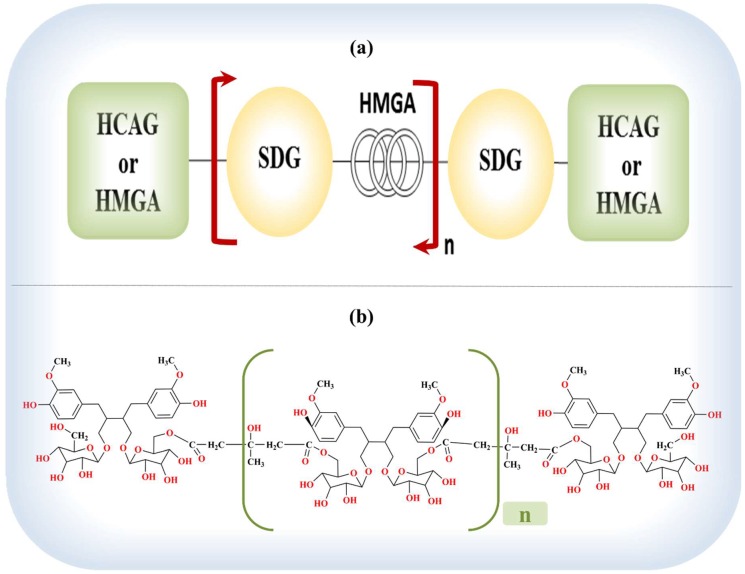Figure 2.
Chemical composition of flaxseed. (a) Schematic representation of the lignan macromolecule. The principal flaxseed lignan, secoisolariciresinol diglucoside (SDG), exists as a macromolecule in the flaxseed hull. This polymer complex is composed of five SDG structures held together by four hydroxy-methylglutaric acid (HMGA) residues with the hydroxycinnamic acids, p-coumaric glucoside (4-O-β-d-glucopyranosyl-p-coumaric acid or linocinnamarin) (CouAG), and ferulic acid glucoside (4-O-β-d-glucopyranosyl ferulic acid) (FeAG) as end units linked to the glucosyl moiety of SDG. The backbone moieties of this macromolecule are represented by the circles. The overlapping circles represent the linker molecule HMGA and the squares represent the terminal units. The terminal unit can be CouAG/FeAG or HMGA. (b) Postulated structure of the lignan oligomer. The SDG–HMGA polymer complex is converted into its monomer units—3-HMGA and SDG—by hydrolysis (average size, n = 3). Flaxseed contains high levels of the lignan oligomer (with ester linkages to HMGA, cinnamic acid, and other phenolic glucosides), which undergoes conversion to its aglycone, secoisolariciresinol (SECO), with further biotransformation into mammalian lignans by the action of the colonic bacteria in mammalian systems. Adopted from references [234,302,348,371,372].

